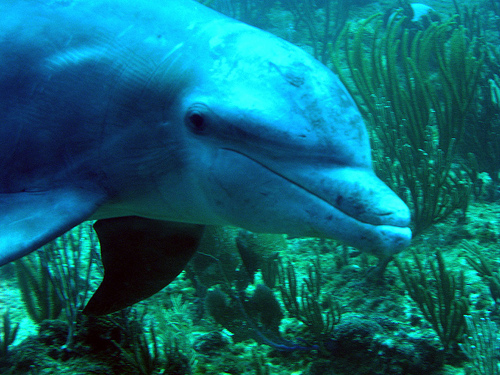New Scientist
Image: NOAA’s National Ocean Service
At first glance, blowing a bubble net to trap sardines is not the smartest move a dolphin can make. Bubbles reflect sonar signals better than sardines do, rendering the fish invisible and giving them a chance to escape.
But mathematical tricks can get around this, and dolphins may naturally use them to locate the fishy signal amid the bubbles.
Timothy Leighton at the University of Southampton, UK, and his colleagues generated dolphin-like sonar clicks in a tank containing a “fish” – a small steel sphere – hiding in a bubble cloud.
Dolphins vary the amplitude of their clicks, Leighton says, so he gave every second click a weaker amplitude than the first. Mimicking what might go on in the dolphin brain, he then amplified the echo from the weaker click to bring it up to the same level as the stronger click.
This made the two echoes from the steel sphere identical. But because even a weak sonar click bounces strongly off bubbles, amplifying the weaker echo made the bubble signal stand out even more than it did in the stronger click. Read more on newscientist.com…








